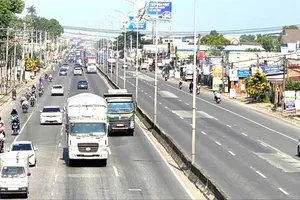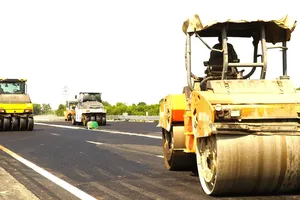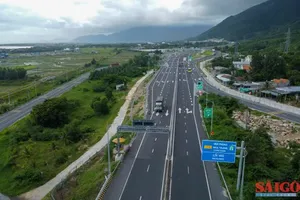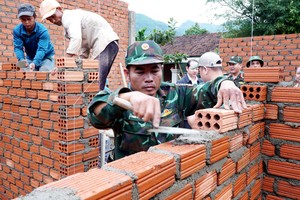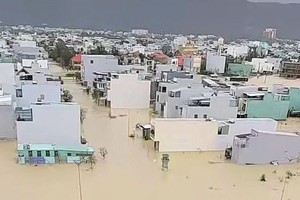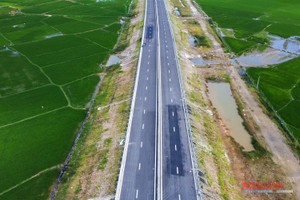As many localities enter the peak of the dry season, marked by intense heat and a consistently high risk of forest fires (Levels IV and V).
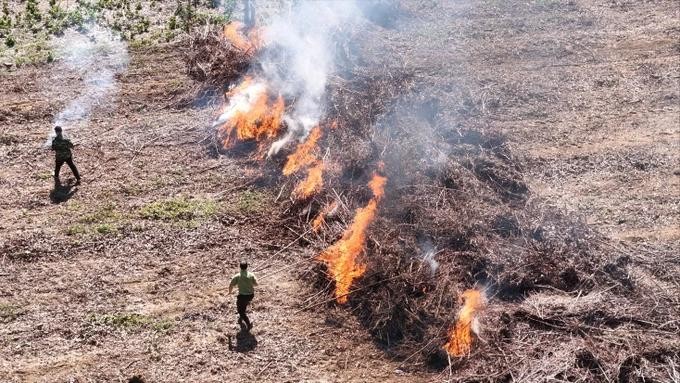
At this time, the sun is blazing hot during the day, so the water level under the forests of U Minh Ha in Ca Mau Province evaporates quickly, the vines living on the cajuput tree trunks gradually dry up, the humidity of the ground cover also decreases very quickly, the risk of forest fires is increasing.
As a result, forest protection efforts are being intensified, with teams working around the clock.
From his position in the observation tower, Truong Minh Kha, an employee of U Minh Ha National Park, stated, 'The team maintains a strict rotation of three personnel on duty at the watchtower. Despite the monotonous nature of the work under the hot sun, we understand the critical importance of remaining vigilant at all times'.
According to the Department of Agriculture and Environment of Ca Mau Province, more than 36,300 hectares of U Minh Ha forest and island forests in the province have dried out. Of this area, approximately 20,100 hectares are currently classified under Level IV fire risk (dangerous), while nearly 4,800 hectares fall under Level V (extremely dangerous).
U Minh Ha Forestry Company - the largest forest land management unit in the U Minh Ha region, overseeing over 24,130 hectares - has deployed 18 fire pump units at high-risk locations and maintains a mobile response team on duty at the company’s headquarters.
Director Tran Ngoc Thao of U Minh Ha Forestry Company said that staff regularly and closely check people entering and leaving the forest and other activities during peak times for forest fire prevention and fighting. In addition, the company closely coordinates with local authorities to grasp professional residents who regularly enter and leave the forest to hunt for bees, report to the police and forest rangers to monitor, promptly educate, and at the same time prevent and handle acts that are harmful to the forest.
In Phu Quoc National Park in the Mekong Delta Province of Kien Giang, authorities have forecast a Level IV to V (extremely dangerous) forest fire risk, with approximately 6,770 hectares identified as high-risk. These areas, characterized by degraded forests, vines, bushes, cajuput forests, grasslands are located across the communes of Bai Thom, Ganh Dau, Cua Duong, Ham Ninh, Cua Can, Duong To, and An Thoi ward.
Park Director Nguyen Van Tiep reported a significant decrease in water resources compared to the same period, raising concerns about insufficient firefighting capacity in the event of a fire. The park is implementing measures such as updating risk assessments, patrolling key areas, and creating firebreaks through plowing and raking.
Solutions adopted to prevent forest fires
In Ba Ria - Vung Tau, the risk of forest fires in the area is at level V, signifying an extremely dangerous situation. Forests in Long Dat, Phu My, Xuyen Moc, and Con Dao districts are particularly vulnerable to fire. The province has taken measures to deploy forces to monitor and tightly regulate entry and exit from high-risk areas.
Additionally, activities involving the controlled burning of vegetation have been temporarily suspended, and strict enforcement actions are being taken against any violations of forest fire prevention regulations.
Authorities in Tay Ninh Province have sent forces and means to locations at risk of forest fires such as Ta Not and Rung Dau in Lo Go - Xa Mat National Park in Tan Bien District. Staff will be on duty 24/7 including holidays, festivals and New Year's. Moreover, the local administrations conducts vegetation treatment, proactively burning and clearing to create white strips 8-10m wide in some areas along planted forests, natural forests, grasslands, roadsides, and agricultural land edges to prevent fires from spreading from the outside.
Dong Nai Province has approximately 182,000 hectares of forest and forestry land, much of which is interspersed with residential areas. The careless use of fire by local residents poses a significant risk of forest fires and potential fire spread. From the onset of the dry season, the province’s forest rangers have proactively monitored local conditions and issued directives to strengthen forest management, protection, and wildfire prevention and response measures.
To bolster forest fire prevention and control across the country, the Prime Minister issued official Dispatch No. 36/CD-TTg on April 13, 2025. A key aspect of this directive is the clear accountability placed on the Chairmen of People's Committees in provinces and cities, who will be responsible to the Government should serious forest fires break out. The dispatch also requires localities to rigorously apply the "4 on-site" motto, manage forest entry and exit, and maintain 24/7 vigilance in high-risk zones.
Furthermore, the Ministry of National Defense and the Ministry of Public Security are prepared to assist local authorities when needed.

